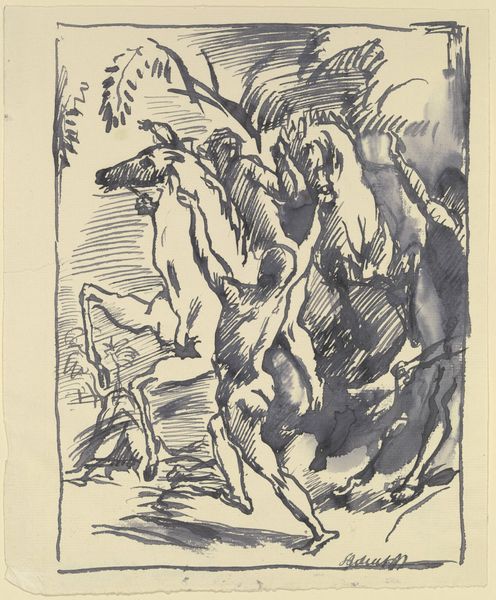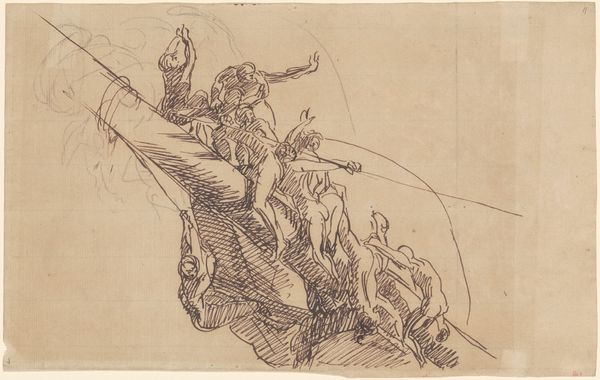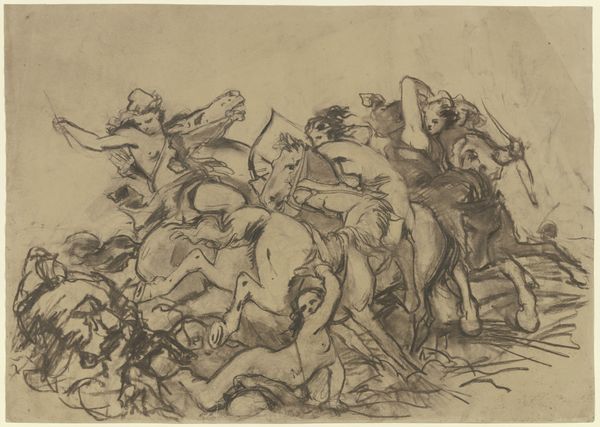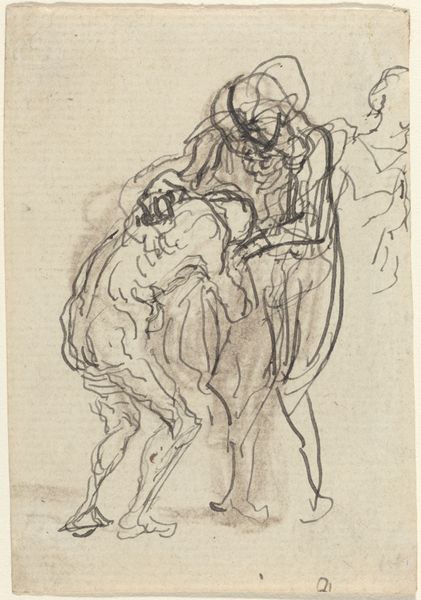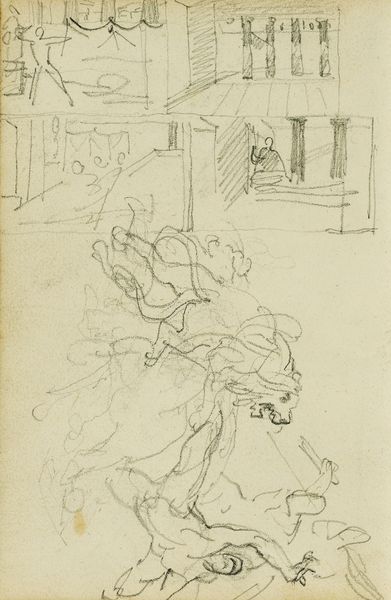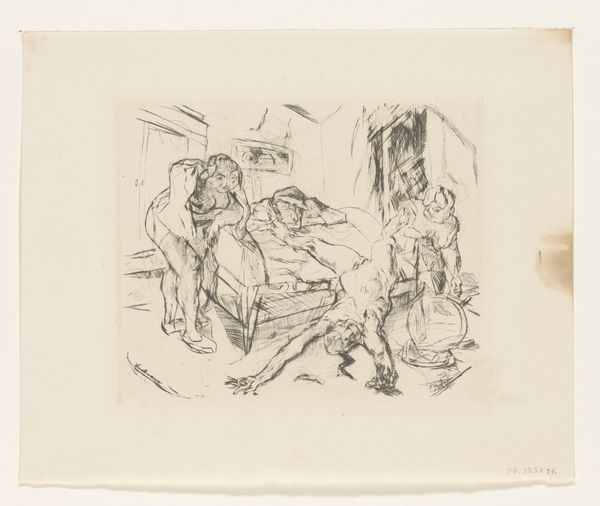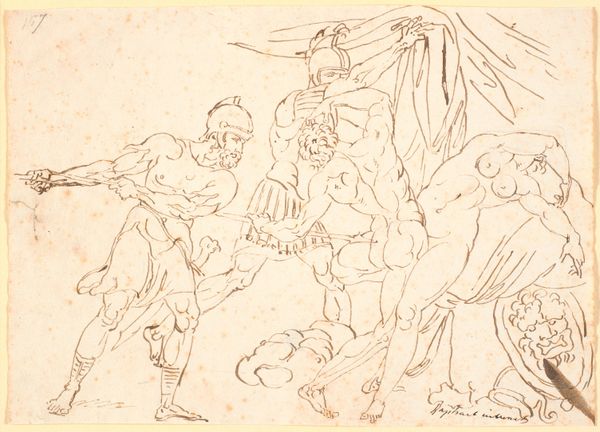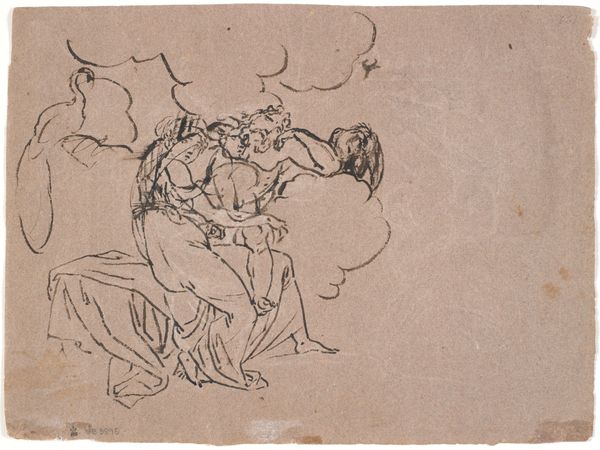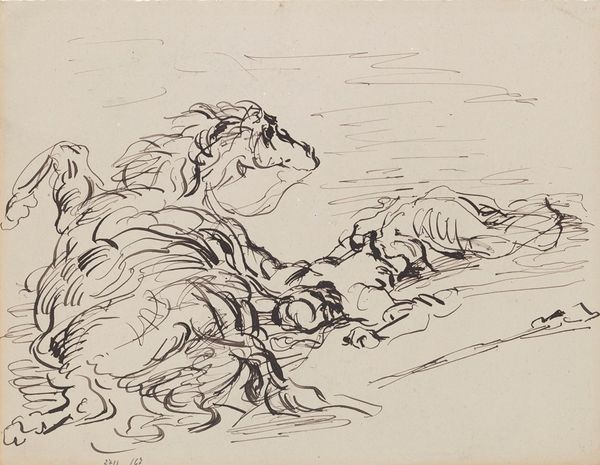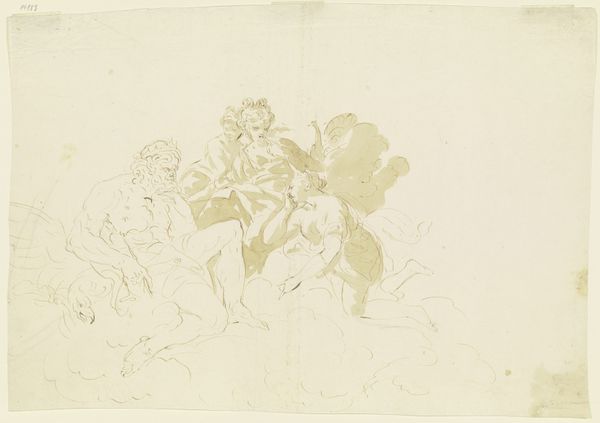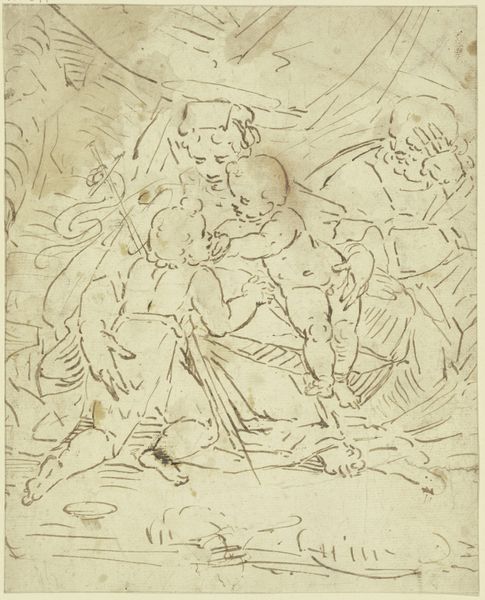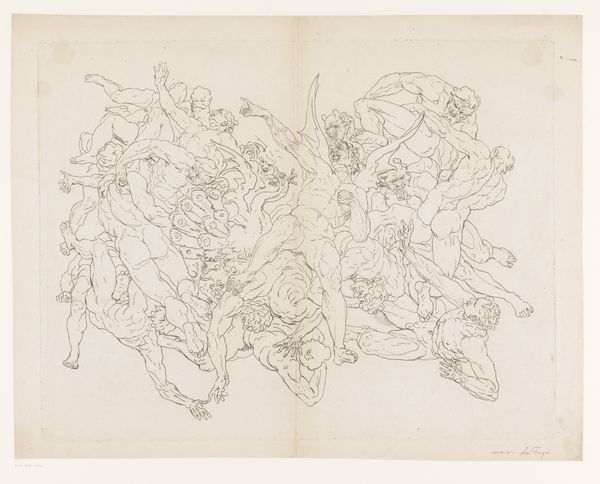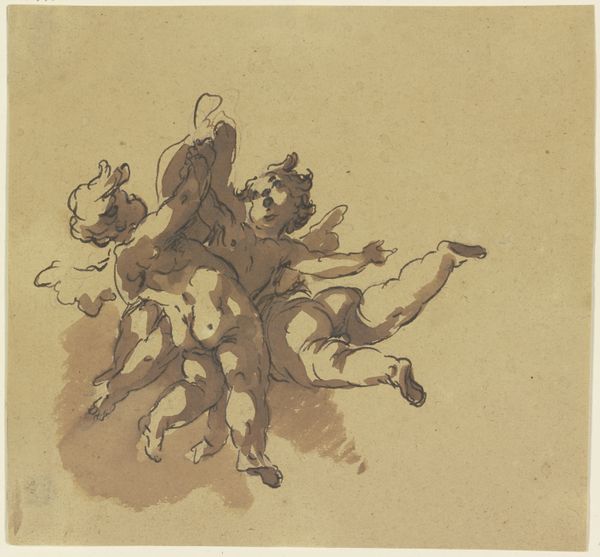
Dimensions: height 341 mm, width 493 mm
Copyright: Rijks Museum: Open Domain
Auguste Danse made this dynamic sketch of two dancing peasant couples, likely in Belgium where he was born, sometime in the mid-19th century. It is made with pen and brush in grey ink. The image offers us a window into the cultural life of the rural working class, but through the eyes of someone who is not a part of it. Danse was a well-regarded portrait painter and printmaker who studied at the Academies of Brussels and Antwerp. Here he takes on a subject that had been gaining traction in academic painting since the early 1800s, the lives of working-class people. The image may romanticize the lives of peasants, but its loose and vigorous style also evokes a genuine sense of vitality. Dance and music offered common people a means of social bonding and cultural expression outside the formal institutions of church and state. To better understand this artwork, one could research the popular dances of 19th-century Belgium. Art history reminds us that meaning is always rooted in a specific time, place, and set of social relations.
Comments
No comments
Be the first to comment and join the conversation on the ultimate creative platform.
